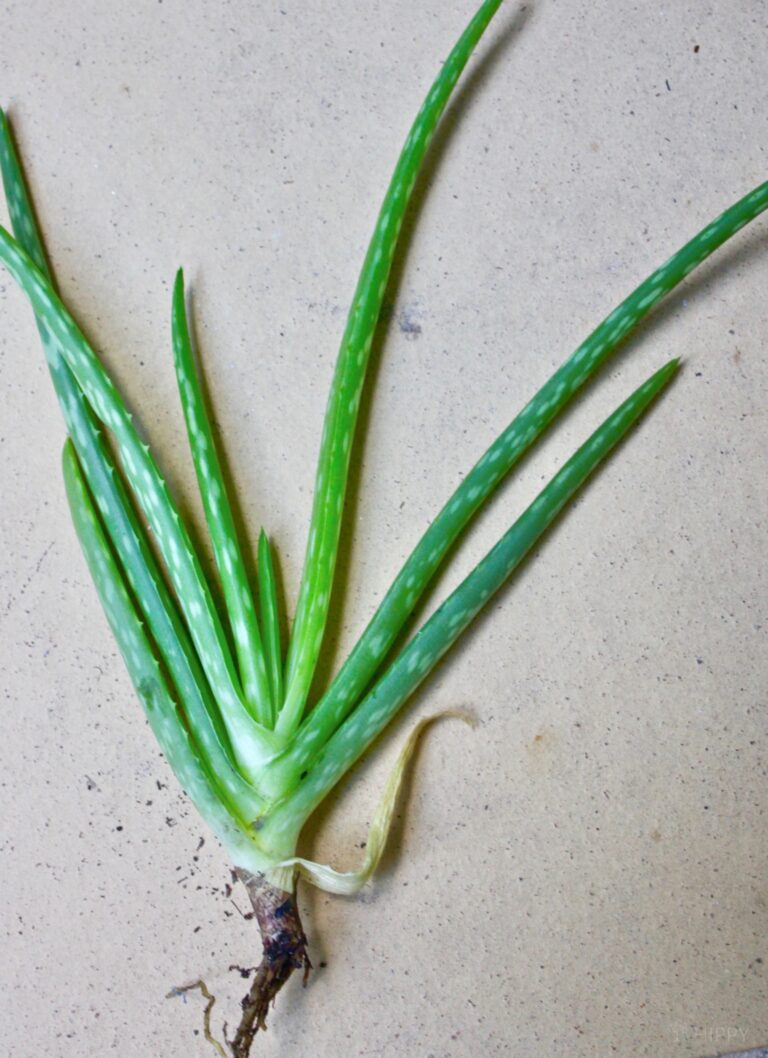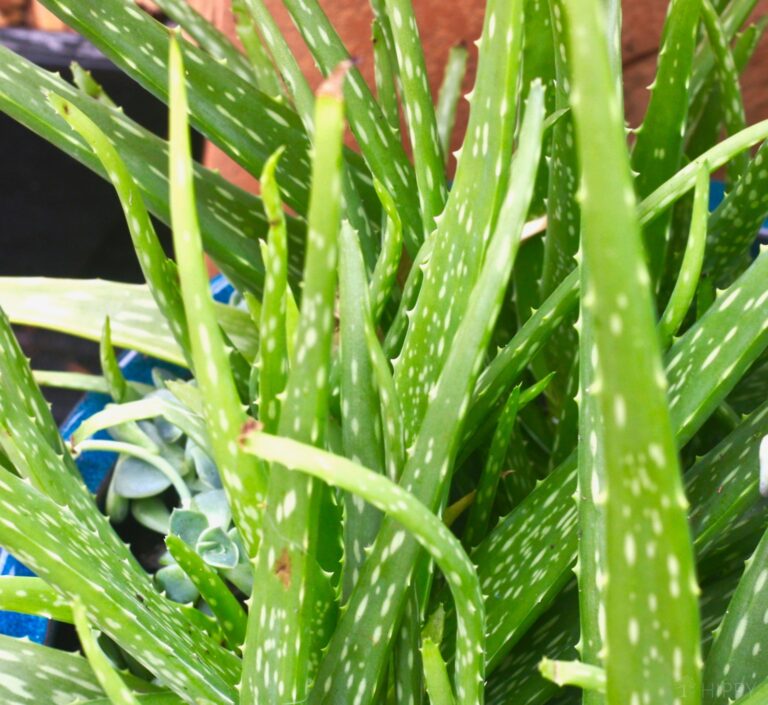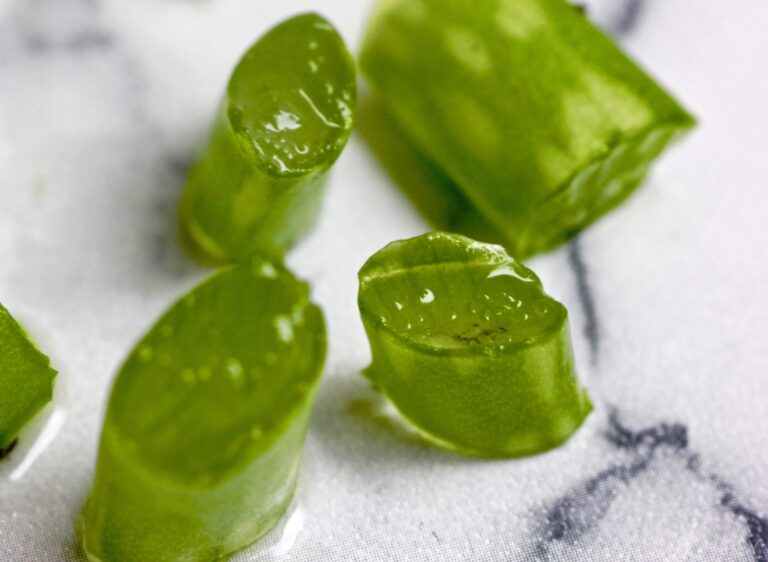Some people refer to all smallish aloes with green leaves and white spots as aloe vera, but there are differences in the chemical compounds within the various aloes even though some may look alike.
Aloe is a genus of plants, Aloe vera is a species belonging to the Aloe genus. It’s simply a difference in taxonomy / classification.
There are around 420 species of aloes varying from massive African tree aloes, Aloidendron barberae that grow to heights of 60-feet, to the tiny Aloe descoingsiia, a native of Madagascar, that will only reach a maximum of 3 inches.

Aloe Vera’s Real Name
Aloe barbadensis miller is the botanical name for aloe vera, which has become a household name globally, due to its proven healing properties.
If using aloe vera juice, ensure you have the right plant because, while aloe extract from various other members of the aloe family can be used for a number of applications, it is not aloe vera, the plant that has caught the attention of the public for its soothing properties for use in cosmetics and medicine.
Aloe Juice Is Aloe Juice, Right?
While the chemical makeup of juice from various aloes is similar in some respects, scientists warn against substituting the juice from another type of aloe as it may not give the same results as when you use aloe vera.
The reason is the number of saponins may vary, as well as antioxidants, and vitamins like A (beta-carotene), C, and vitamin E. Aloe vera also contains vitamin B12, one of the very few plant-based sources of this very necessary vitamin to keep blood and nerve cells healthy.
What’s so Special about Aloe Vera?
Now, aloe arborescens and aloe ferox, to name just two aloe species, have very similar qualities and by some reports are superior, so one wonders why people are using aloe vera instead. It could come down to the following three reasons:
- People are more familiar with aloe vera, and trust that any product containing aloe vera will work well. If they see aloe arborescens, aloe ferox, or any other aloe species listed on the ingredients, they may decide not to buy it, as they are not familiar with these names.
- Aloe vera grows quite fast and multiplies rapidly, producing many pups off a plant, and making it easier to work with on a commercial scale than a larger plant like aloe arborescens, that requires more space.
- Aloe vera is a smallish aloe that has particularly soft and juicy leaves, unlike some of the other varieties, whose leaves can be harder to slice through, making it less labor intensive to collect aloe vera juice.
What Other Aloes Are Suited to Extracting the Gel?
We are not going to go through all the species, just the three most commonly used for medicinal and cosmetic purposes.
Aloe Ferox
Aloe ferox grows six feet tall, or more. It is used in traditional medicine in Africa and commercially worldwide. Originating from South Africa, the plant is now widely spread.
The bitter aloe juice is used in preparations used to discourage people from biting their nails, and is also used as a laxative, although continued use is not advised as it may lead to irritation in the pelvic region.
Like aloe vera, the juice from the core of the leaves of aloe ferox is also used in treating burns, wounds, lacerations, and other skin irritations, when applied as a poultice.
However, scientists have identified certain compounds within aloe vera that do not occur in the same combinations in other aloe species.
Aloe Arborescens
Aloe Arborescens is an upright growing aloe with a central stem and branches developing off it at various angles, forming something of a tree – hence the ‘arbor’ in the name.
It can grow to over 4 meters in height in its native tropical to subtropical regions and is commonly used in skin preparations as well as for sunburn.
Aloe Petricola
Also known as the stone aloe, this is an attractive plant with greyish leaves and upright crimson flowers in a candelabra shape. The gel from the leaves of this aloe is also good for sunburn, and for healing small wounds.
How to Identify Aloe Vera
The plants have narrow leaves that form an elongated triangle with serrations on the edges. The leaves tend to grow more upright, and are a fresh pea green color rather than the gray green of some other aloe species.
The plant is quite small – growing about 12 to 24 inches tall, and tending to produce plenty of ‘pups’ so it tends to form a clump.

Are There Different Types of Aloe Vera?
No, while there are lots of aloe species there is only one aloe barbadensis miller, so don’t believe articles that list x types of aloe vera.
Aloe species yes, aloe vera no – unless you are one of those who call all aloe types aloe vera, which is botanically incorrect.
Where Is Aloe Vera Found?
Aloe vera is found growing wild in the drier regions of Africa, and Asia, and is now also found in America, and Europe.
Most nurseries stock aloe barbadensis miller (aka aloe vera), which grows outdoors in USDA zones 8 to 12. It can also be grown outside in containers during the summer in colder zones, but will need to be taken indoors in the winter in zones 7 to 5.
How Do I Get the Juice out of Aloe Leaves?
The extraction of the juice involves a sharp knife and slitting the leaves carefully to peel them back and reveal the clear gel. Watch this video to see exactly how to extract the juice from the leaves of your aloe vera plants:
According to an article published in the Indian Journal of Dermatology the aloe vera plant’s inner clear gel is composed of amino acids, lipids, vitamins, sterols, and glucomannans, which account for its healing properties.

The middle layer has the bitter yellow sap, and outside is the thicker rind of the leaf that protects it from the weather.
You do not need the whole plant for medicine and cosmetics – just cut off the required number of leaves, so it can continue to grow and produce new leaves.
So now you know the difference – basically aloe vera is a synonym for aloe barbadensis miller – the only true aloe vera.

As a child I wanted to grow up and marry a farmer… simply because it was so different from my life right on the shores of the ocean. Well, I didn’t marry a farmer but a surfer instead. The urge, however, to grow stuff and make great food for a big family never left. We are on acreage with a sea view and easy access to fresh caught crayfish and other seafood – the best of both worlds. As an artist and writer I enjoy creating new recipes, tweaking traditional ones, and sharing the results not only with family and friends, but online. Mee the rest of the team at this page.

Aloe vera is the botanical name, not Aloe barbadensis miller…barbadensis and is the old botanical name and Miller is just the last name of the guy who described it as Aloe barbadensis. Also, the plants you show as vera are not true vera..those are the variety commonly (but not officially) called Aloe vera var. chinensis. That variety is often thought to be a hybrid of vera or different species completely…Aloe massawana or Aloe officinalis possibly.